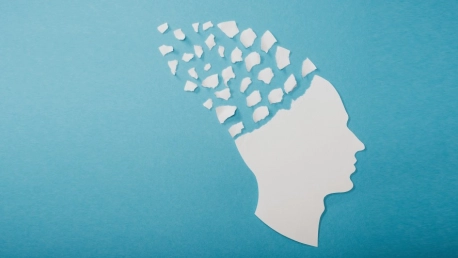Mental health problems, such as depression, anxiety, bipolar disorder, and schizophrenia, can negatively impact everyday life, including one’s ability to work, study, socialize, and take adequate care of themselves. With 13% of people with mental health disorders between the ages of 10 and 19, there is a significant need to approach the well-being of these students and how it affects their learning experiences.
According to the Mayo Clinic, while many people occasionally face physiological stress, these concerns can develop into mental illness. Consequently, their ongoing signs and symptoms can negatively impact their ability to function and fulfill their fundamental needs.
For instance, individuals diagnosed with depression may find it challenging to get out of bed or complete basic tasks like showering or eating. Those suffering from anxiety may avoid interacting and socializing with their peers. Similarly, students with bipolar disorder may experience periods of low energy during depressive episodes or excessive energy and impulsivity during manic episodes, both of which can impact their daily functioning.
Learners are not immune to these problems, and the education sector must adjust to acknowledge the mental well-being of students while establishing and promoting solutions for positive psychological health.
This article will explore the impact of mental health among students in the US, the key factors driving these conditions, and the government is working to minimize these challenges among learners.
The Impact of Mental Illness
According to the New Hampshire Department of Education, the mental well-being of students undoubtedly contributes to school outcomes. The study confirms that mental health concerns can significantly impact their ability to concentrate, focus, and retain information. As a result, these learners may find it challenging to learn and perform well during exams.
Moreover, mental health difficulties can also impact a student’s motivation, energy levels, and overall school engagement. This can lead to truancy, lack of class participation, and difficulty completing assignments on time.
A report by the National Alliance on Mental Illness (NAMI) suggests that almost 1 in 6 school-aged children now experience impairments in life functioning due to a mental illness. In addition, these conditions impact students’ social and emotional development, which can further disadvantage academic performance.
Another report by UNICEF on mental illness in adolescents confirms that 1 in 5 respondents between ages 15 and 24 frequently feel a lack of interest and unhappiness. The study found that mental illness is the fourth leading cause of suicide among 15 to 19-year-olds. Unfortunately, for a younger age bracket, between 10 and 19, one mental health-related suicide occurs every 11 minutes per annum.
In addition, UNICEF highlighted that during the COVID-pandemic, which already took a toll on the mental health of millions, females were the most impacted by anxiety and depression symptoms.
However, the UNICEF report also proved that many factors exist to protect children from the impact of mental illness—physical activity, spending time with family and friends, and optimized communication between parents and teachers regarding student well-being.
What Factors Cause Mental Illness in Learners?
There is a wide range of reasons mental illness could develop in students, ranging from genetics to traumas and experiences. As confirmed by WebMB, these are a few of the factors that can negatively impact the mental health of learners:
- Emotional, physical, or sexual abuse
- Genetics
- Severe stress
- Brain defects
- Neglect
- Social disadvantage
- Substance abuse
- Domestic violence
- Bullying
- Poverty and homelessness
- Prenatal damage
- Discrimination and stigma
While educational institutions cannot prevent these experiences and traumas, they can initiate programs and take additional measures to minimize the effects.
Teachers Are Now Facing Disruptive Student Behavior
Based on a recent survey at the School Superintendent Association (AASA) National Conference on Education (#NCE2023), 84% of teachers have expressed concerns about student mental health.
They have also added that learners’ self-regulation and relationship-building skills are lagging compared to pre-pandemic levels. In addition, the report reveals that teachers are experiencing more disruptive student behavior, while classroom incidents involving physical violence have doubled. The AASA extracted these insights from data comprising more than 1,000 district and school administrators, teachers, and student support staff.
EAB Senior Director of K-12 Research Ben Court summarized the findings by saying that students who engage in disruptive behavior often struggle with underlying mental or social health issues. “Unfortunately, nearly 60 percent of teachers feel that pressure to boost lagging academic outcomes leaves them with insufficient time to address behavioral issues, and only 45 percent feel they are receiving adequate training to do so,” he added.
Consequently, US educational institutions and platforms must equip their teachers with comprehensive training to help students with mental health issues. As these professionals influence pupils’ learning experiences, they must have the skills to approach, support and identify mental health conditions.
How Is the Government Helping Students with Mental Illness?
In 2022, the Biden-Harris administration implemented two primary strategies to minimize the effect of mental health on learners. The first among these solutions was to award $300 million in grants, expanding mental wellness resources in schools. These funds drove two critical programs—a mental health service demonstration and school-based mental health services.
The first initiative invested over $140 million to advance the mental health profession while securing partnerships between educational institutions and employers to drive awareness. In addition, the second program also received $140 million in grant funds to increase phycology well-being resources in schools, including counselors, phycologists, and similar professionals.
The Biden-Harris administration’s second solution encouraged governors to invest in mental health resources in schools. As a result, the administration will provide more funding and expertise for enhanced delivery of current mental health resources, community-based behavioral sciences, expanded training for pediatric providers, and building awareness and access to resources for mental wellness.
Conclusion
Mental illness has become a critical concern among students between the ages of 10 and 19. These learners may face symptoms of depression, anxiety, and bipolar, negatively impacting their ability to concentrate in school. These symptoms can develop into crippling mental illness, making it challenging for many people to complete basic tasks, such as eating or maintaining personal hygiene.
Many factors contribute to mental conditions, and educational intuitions cannot prevent these problems. However, they can employ strategies to minimize it and deliver robust support. The Biden-Harris administration has taken active measures to aid learners with physiological disorders, including funding numerous programs to raise awareness about these disorders and provide improved resources for mental health in school. These initiatives can give students and teachers the support and materials they need to acknowledge, identify and help learners gain thriving psychological health.









